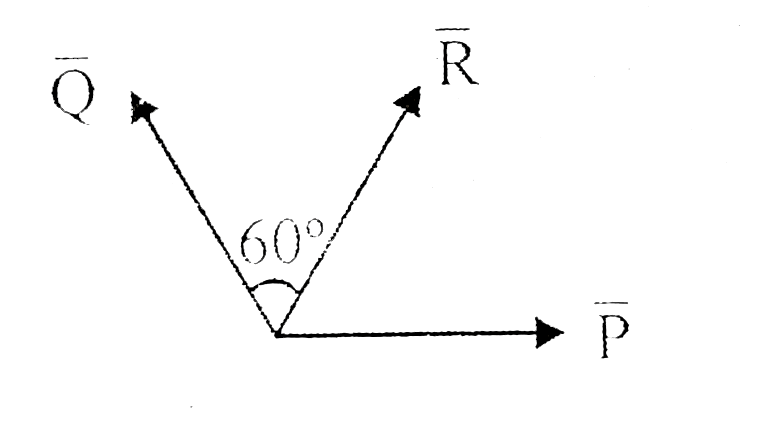If vector P, Q and R have magnitude 2,2, and 2 units and →P+→Q=R then, the angle between →Q and →R is -
A
30∘
B
60∘
C
120∘
D
90∘
Video Solution
Text Solution
The correct Answer is:B
If magnitude of resultant of tow vectors having same magnitude is the same as that of each of the vectors then, angle between the two vectors is 120∘

|
Topper's Solved these Questions
- TEST PAPERSBook:BANSALChapter:TEST PAPERSExercise:PHYSICS PART (A)
Explore 32 Videos
- TEST PAPERSBook:BANSALChapter:TEST PAPERSExercise:PHYSICS PART (B)
Explore 3 Videos
- TEST PAPERSBook:BANSALChapter:TEST PAPERSExercise:PHYSICS PART- C
Explore 4 Videos
- SEMICONDUCTORSBook:BANSALChapter:SEMICONDUCTORSExercise:CBSE Question
Explore 32 Videos
Similar Questions
Knowledge Check
If vector P,QandR have magnitude 5,12,and 13 units and →P+→Q=→R, the angle between Q and R is
Acos−1512Bcos−1513Ccos−1(12)13Dcos−1713If →P.→Q=PQ, then angle between →P and →Q is
A0∘B30∘C45∘D60∘If ∣∣→P×→Q∣∣=PQ then the angle between →Pand→Q is
AzeroB90∘C45∘Dany angle between 0 and 180∘
If →P+→Q=→R and ∣∣→P∣∣=∣∣→Q∣∣=∣∣→R∣∣, then angle between →P and →Q is
View SolutionGiven →p⋅(→P+→Q)=P2 then the angle between →Pand→Q is
View SolutionGiven that P=Q=R. If →P+→Q=→R then the angle between →P and →R is θ1. If →P+→Q+→R=→0 then the angle between →P and →R is θ2. The relation between θ1 and θ2 is :-
View SolutionChoose the incorrect option.
The two vectors →Pand(Q) are drawn from a common point and →R=(P)+(Q), then angle between (P)and(Q) is
View SolutionThe resultant →Pand→Q is perpendicular to →P. What is the angle between →Pand→Q?
View Solution

